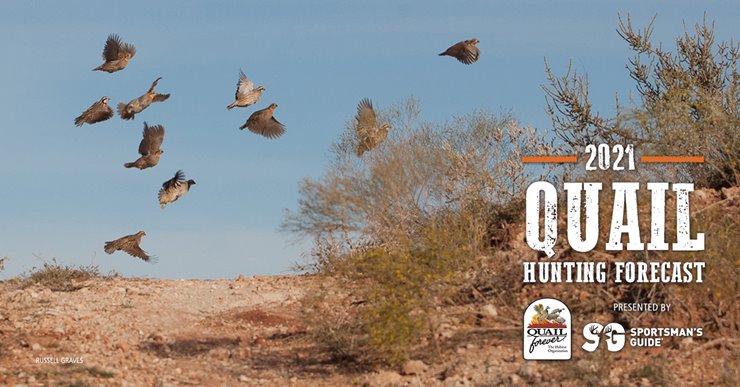 By Oliver Hartner
By Oliver Hartner
Severe winter temperatures seem to have negatively impacted the quail population for Magnolia State quail hunters, but once spring and summer rains fell within normal ranges, it might have produced healthier cover and food sources for those broods surviving the ice storm.
WEATHER AND CONDITIONS
“Though I don’t have direct estimates, I believe there had to be some greater-than-average decline in winter carryover of birds as a result of a severe ice storm in mid-February,” says Rick Hamrick, Wildlife Biologist for the Mississippi Department of Wildlife, Fisheries, and Parks. He adds much of the state was covered by ice for about a week. Thus, he expects the population going into this breeding season was less than average given the icy conditions.
Hamrick believes overall weather conditions were good for nesting and brood-rearing despite some late spring and early summer deluges. “By peak hatch time, rainfall was more moderate. On the positive side of being wet, vegetation is robust, and there should have been plenty of insects produced for growing chicks,” he says.
HABITAT, BROODS AND COUNTS
Hamrick says where suitable habitat conditions are available, habitat quality should be favorable. “Abundant rainfall has resulted in plenty of vegetation growth. But stepping back to a larger overall view, there continues to be a lack of suitable early successional habitat in largely connected patches of land throughout Mississippi, and thus quail population growth continues to be limited by the scale of habitat.”
Observational reports suggest a good quail hatch occurred despite the winter weather anomaly this past February. “I have been getting reports of quite a few broods spotted in recent weeks, so I am hopeful we had a good production year to offset the late winter losses. Looking at some of our better quail habitat Wildlife Management Areas (WMAs), the numbers from call count surveys are generally down this year. On these WMAs, we probably saw an average decrease of around 20% in the 2021 call count index compared to 2020,” Hamrick says.
Recent count trends are available at
http://www.mdwfp.com/wildlife-hunting/quail-program/population-trends/.
TOP SPOTS
Hamrick directs quail hunters to the Mississippi WMAs and national forests in the Southwest and Southeast regions for potential public land hunting opportunities. “Prescribed burning and other forest management activities in these piney woods areas produce some favorable quail habitat spots.” He also adds that some areas of Northeast Mississippi also have slightly more favorable land use conditions for quail. The website for Mississippi WMAs are found at
http://www.mdwfp.com/wildlife-hunting/wma/, and those for the National Forests are found at
https://www.fs.usda.gov/mississippi/.
INSIDER TIP
For those ready to explore the piney woods of Mississippi, Hamrick advises, “Be ready to cover a lot of ground and get into some thicker cover as the season advances. Birds will often use hardwood edges and thickets to seek cover and feed on smaller acorns and fragments left by other animals. Working these areas within the vicinity of fields and more open woods with grassy ground cover may produce a covey contact or two, and probably a few woodcock as well.”